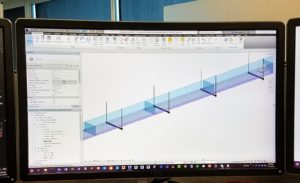11.12.2018
Five More Revit Rules to Live By
 Earlier this fall we shared a blog post with five Revit rules to live by. Because my fellow Faith Technologies Vision Team members and I want to help make your Revit experience the best it can be, we’d like to share five more tips that may save you some time in your busy schedule.
Earlier this fall we shared a blog post with five Revit rules to live by. Because my fellow Faith Technologies Vision Team members and I want to help make your Revit experience the best it can be, we’d like to share five more tips that may save you some time in your busy schedule.
- The Good, The Bad, and The Downright Ugly
We are not referring to a Clint Eastwood movie here; we’re talking about Revit families that can have detrimental impacts to the model you are working on. Using trusted families in your model will keep everything running smoothly and efficiently, while one outlaw family downloaded from the internet can cripple an entire Revit project. Do some testing before you bring a new family into your model.
- Deleting and Redrawing is Rarely the Correct Answer
Sometimes you may have to delete a model and start over, but you first need to perform due diligence to find out why it’s not working. If there is an issue with another part of the model that is bleeding into your part, deleting yours will not fix the issue. Take the time to find the issue, and if fixing it would take longer than starting over, then you can make the call to delete.
- We Have Met the Enemy, and He is Groups
When planning a Revit party, you don’t want to invite Revit groups or Revit assemblies – these party poopers do not play nicely with others, especially in a large model with a lot of components. Revit groups and assemblies eat their weight in data when they are created, and this will balloon the size of your project, causing it to run slowly and be very choppy.
- Worksets Are Not Filters
This point is worth repeating: worksets are not filters! Revit worksets are powerful tools, and Revit filters are amazing, but using one to do the function of the other is redundant and can impact model performance. Worksets are meant to allow a user to turn off an area of the project they are not working in to improve Revit performance, not to make your sheets and views look better.
- Is This the Workset I’m Supposed To Be On?
Make sure the workset you are supposed to be on is the active workset, or your items may disappear, prompting you to potentially draw them a second or third time. This will cause your bill of materials and quantities to be inaccurate and lead to incorrect orders.
We hope you’ve enjoyed these and our previous suggestions for making the most of Revit for your design work. What tips do you have for using this powerful tool?
If you enjoyed this blog article, please subscribe to stay up to date on the latest industry news from our experts at Faith Technologies.



